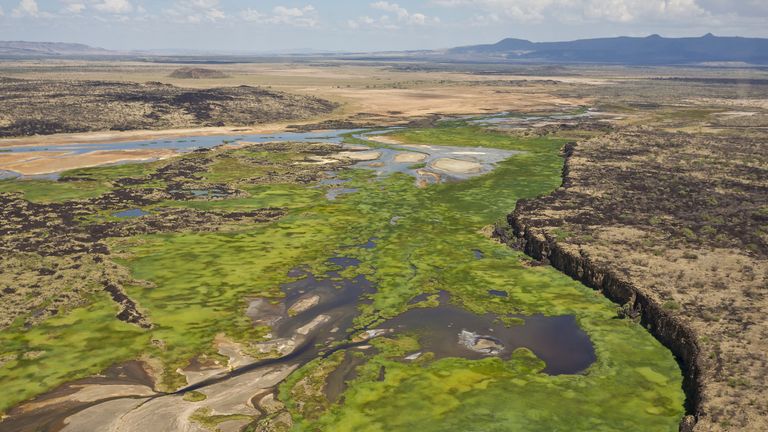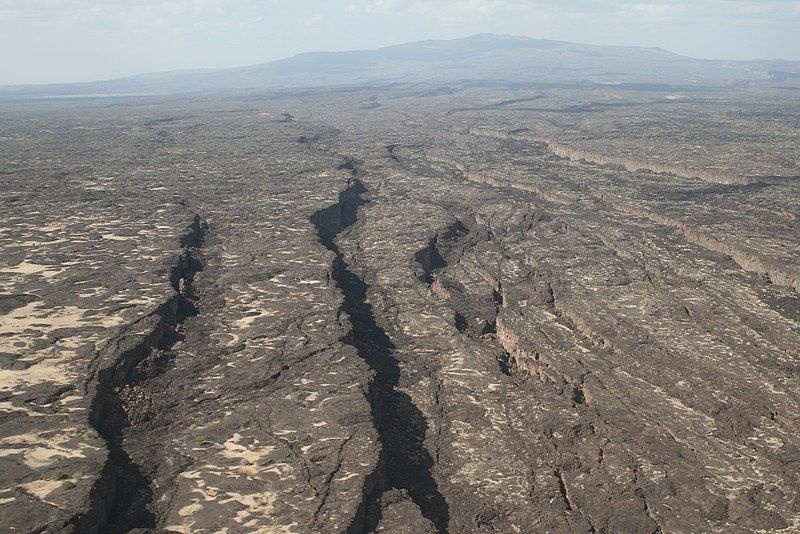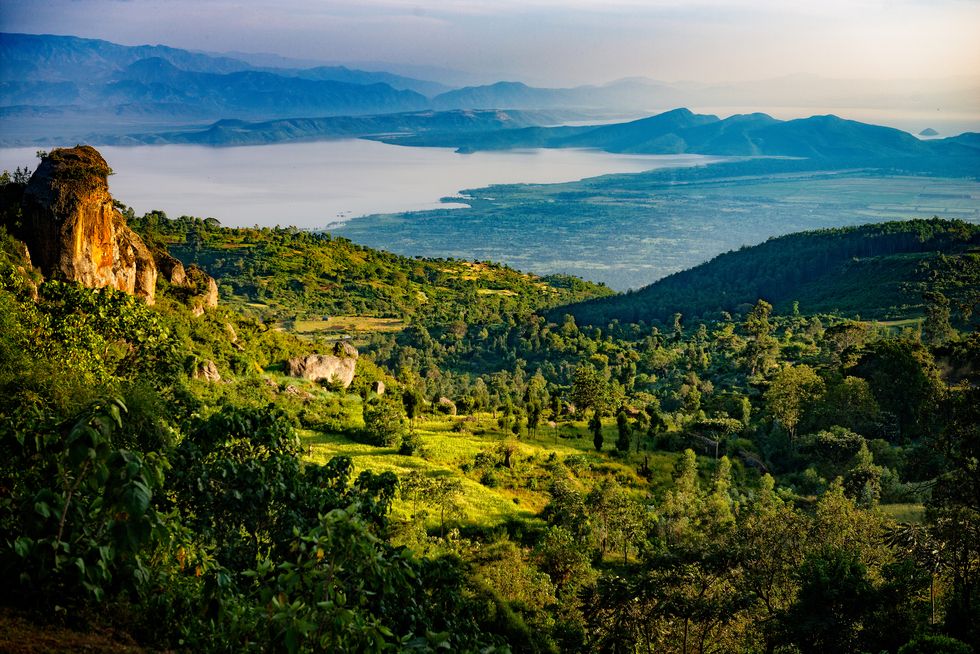Over the course of a couple days in September 2005—amidst a flurry of volcanic eruptions and hundreds of earthquakes—the ground in northeast Ethiopia split wide open. For millions of years, a bubble of molten rock had been percolating below the Earth in the Afar Depression, an inhospitable spit of desert where summer temperatures can climb as high as 120 degrees. Finally, it arrived at the surface, cleaving the land in two and creating a fissure nearly 40 miles long and up to 25 feet wide.
“We had never seen something like this,” Cynthia Ebinger, a geologist at Tulane University tells Popular Mechanics. “This kind of thing happens regularly on the seafloor, but it was the first known example on land.”
The Dabbahu Fissure, as the 2005 rift became known, is hardly the first geological event to rock the Afar, a remote region scattered with geysers, gas vents, hot springs, volcanoes, and one of the only lava lakes in the world. A mecca for Earth scientists, the Afar Triple Junction sits in the Y-shaped cradle of the Arabian, Nubian, and Somali plates. At about the same rate that your fingernail grows, these plates are moving apart, while processes below them are generating the extreme heat and energy that cause the unique geophysical features the region is known for.
Of those features, today the Dabbahu Fissure is the star of the show. Scientists now suspect that it’s along this rift that the first continental breakup since Pangea will occur and that in a couple million years or so, Africa might span two continents—allowing the Earth to debut its newest ocean.
What is the East African Rift System?
One of the greatest geological wonders in the world, the north–south East African Rift System (or EARS) is actually a network of rifts and valleys caused by the fracturing of the earth’s crust. EARS is about 25 million years in the making and consists of two branches: The Eastern Rift Valley extends from Jordan to the coast of Mozambique. The Western Rift Valley, meanwhile, stretches from Uganda to Mozambique, and contains some of the deepest lakes in the world.
But of all the land jostling around within EARS, the Afar Depression is the most extreme, boasting the highest magma-production rates and the most active volcanoes in the region. Over time, a mantle plume of magma had formed beneath the Depression, pushing hot rocks up against the surface, like globs of oil rising in a lava lamp. Eventually, extreme pressure caused magma to push up into the cracks between those rocks, busting open Dabbahu Fissure in 2005.
The pressure was so powerful that the plates separated by as much as 25 feet, achieving 400 years of separation in a few days, according to Ebinger. It was such a big number that one of the scientists using satellite data to measure the new rift was certain he had botched his calculations.
Witnessing The Birth of an Ocean
Within weeks of the 2005 event, Ebinger was on a plane to Ethiopia, where she worked with scientists from around the world to get geophysical instruments on the ground as soon as possible. Immediately, the team noticed that the plates that underlie the region were moving much more rapidly than usual, owing to the volume of magma below the surface.
Ebinger says that over the following five years, there were 13 more events similar to but less severe than the 2005 rifting. Today, the plates have slowed back down to their normal speed.
Looking forward, Ebinger predicts there will be more of these dramatic episodes, perhaps one every 50 or 100 years. As the land splits apart, the Afar Depression will sink deeper and deeper, a process known as seafloor spreading. “If we fast forward about 500,000 years, the Afar Depression could fall below sea level and be flooded by water.”
The new sea may or may not split the continent completely in two. “Rates of separation decrease as you go south,” Ebinger says. “So it could just be a wedge of sea water that moves in.”
Reasonable Doubt
Not all continental rifts turn into oceans, and there’s still a chance the East African Rift might fail. In fact, scientists have found areas of molten rock and stretching in the Earth’s crust miles from the rift, a discovery that defies conventional geological wisdom, which holds that all the splitting activity should be happening at the rift itself.
The Dabbahu Fissure could go the way of North America’s Midcontinental Rift (MCR), a 1,800-mile rainbow-shaped seam that cracked open more than a billion years ago. The rift, which ran from modern-day Detroit to central Kansas, produced more than 240,000 cubic miles of volcanic rock over 30 million years before it suddenly, mysteriously, stopped spreading. There are numerous theories as to why, but the MRC remains the deepest rift ever discovered that didn’t become an ocean. Perhaps the Dabbahu Fissure will follow in its footsteps. Only time—a lot of it—will tell.
Ashley Stimpson is a freelance journalist who writes most often about science, conservation, and the outdoors. Her work has appeared in the Guardian, WIRED, Nat Geo, Atlas Obscura, and elsewhere. She lives in Columbia, Maryland, with her partner, their greyhound, and a very bad cat.















